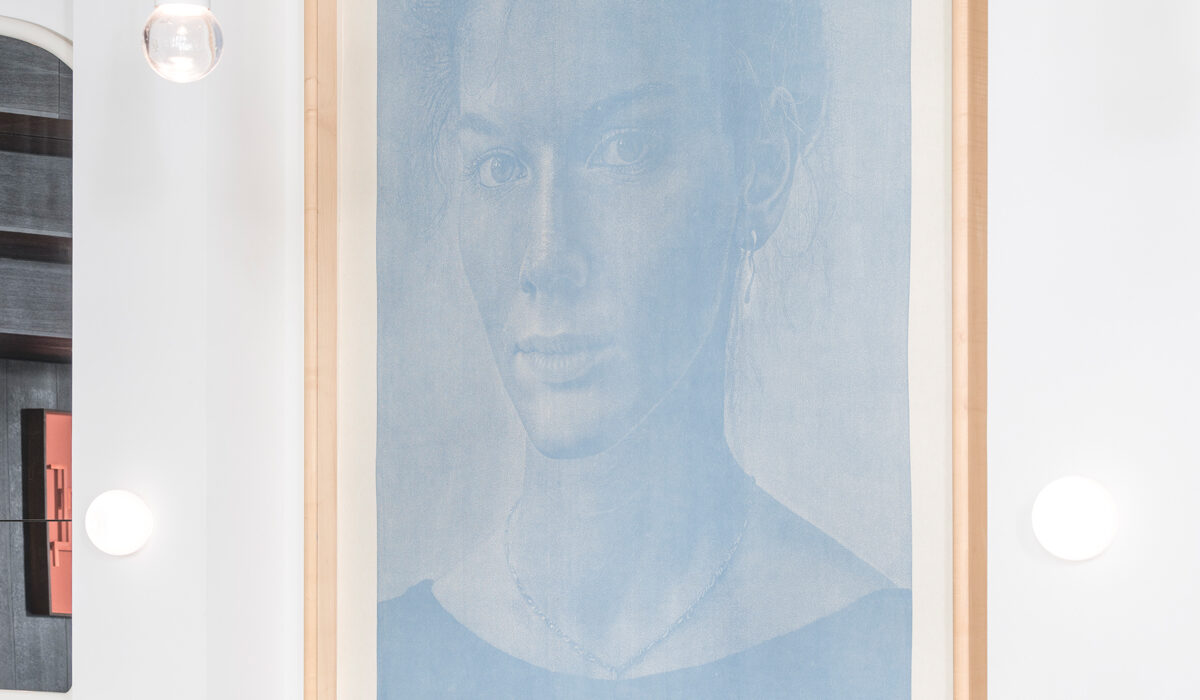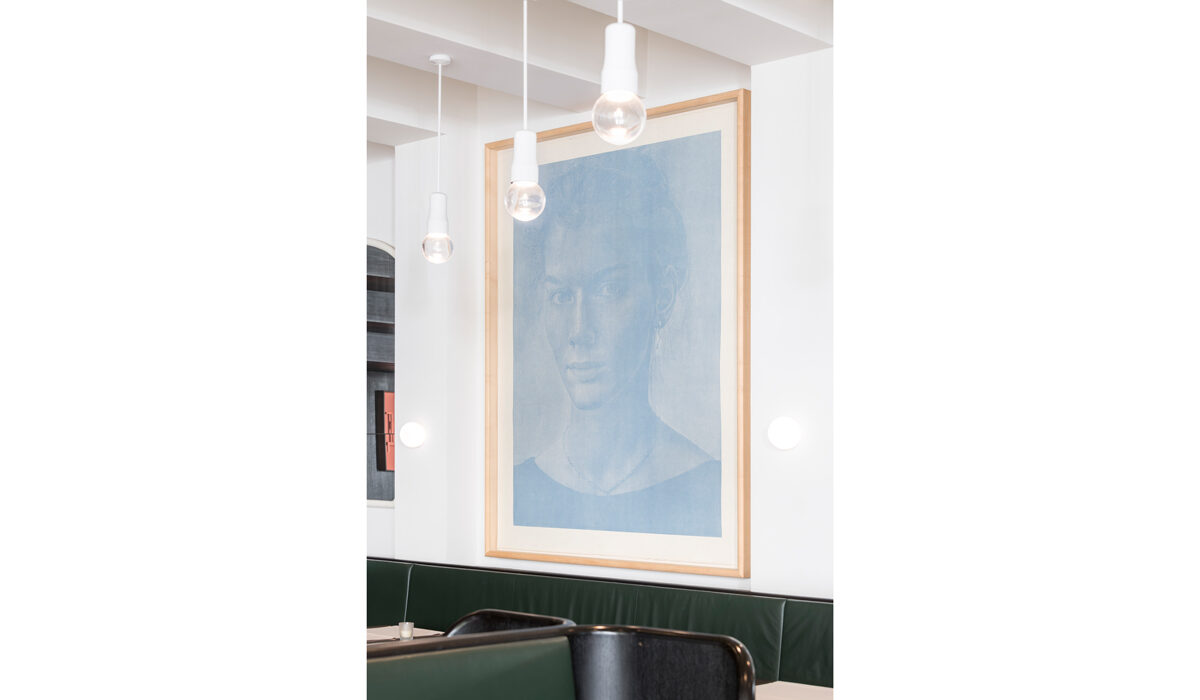Franz Gertsch – «Doris»
Franz Gertsch’s first paintings can be seen in the light of Pop Art: Compositions based on photographs, reduction of figures to silhouettes, absence of details, simplification of forms and flat colours. At the turn of the 1970s, on the other hand, the artist materialised the precision of the photographic image, painting with such meticulousness that from a distance his pictures appear more “real” than reality. These large formats, often based on photographs taken by Gertsch himself, tell the story of an era through portraits of artists and genre scenes.
In 1986, in his search for new pictorial solutions, Gertsch produced his first xylographs using a technique he had just developed: he pressed the wooden panel with a pricking knife in such a way that he obtained the most nuanced possible modelling of the original image by means of thousands of small dots of varying depth. The original image is projected onto the matrix, which is covered with a thin layer of blue dye so that the artist can follow the progress of his work by making each mark visible thanks to the hole left behind. The area that remains in relief is coloured and printed, while the dotted line is translated into a reserve (the white of the paper).
Gertsch makes his own inks from pure pigments bought in Kyoto and orders his paper from one of the best Japanese manufacturers, Heizaburo Iwano. The manual printing of each print with large magnifying lenses is delicate and requires the cooperation of several people, including the artist. Each of the eighteen prints that make up Edition Doris is printed in a different shade according to three chromatic subgroups. Each variation has its own aura, but all deliver an extraordinary tactile sensation and open up a new perception of the image.
“People always ask me how I got from painting to woodcuts, and all I can really say is that with the last [oil] painting, ‘Johanna’, I always thought, ‘I want to do woodcuts.’ In my work, I often chose the most unsuitable medium as a challenge. There is nothing more unsuitable than a woodcut […] to implement three-dimensionality. […] One day I went there, took the gouge and started cutting these points. In the first woodcut there are also some lines, but already in the second one I gave up on that. […] The first woodcut portraits [with three printing plates] were not yet monochrome, I still had the need for a minimal colourfulness. […] It was a very important step to use only the one plate, the one light drawing. The light was really just paper cut out. The picture emerges from the clear balance between the one colour and the paper.” (Franz Gertsch, in: Ausst.Kat. Baden-Baden u.a. 1994/95, p.14f.)
Title:
Doris
Woodcut on Kumohadamashi Japanese paper
244 x 184 cm
Artist:
Franz Gertsch
Location:
Volkshaus Basel, Brasserie

